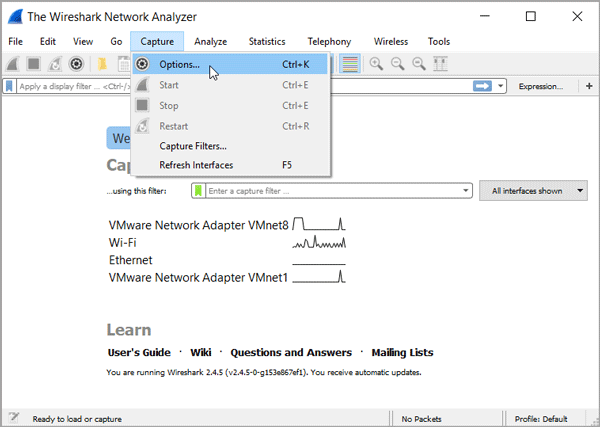
webserver not responding), performance problems and alike. Monitoring will warn you about broken services (e.g.

Keep an eye on what's going on in your network. So depending on the cause, Wireshark may or may not be helpful tracking down performance problems. Wireshark can help you find the originator and the type of the flood. misconfiguration/buggy implementation) sending of lots of packets which floods the network. Protocol problems: incompatible protocol implementations slow down possible performance, same as protocol problems in the general section above.įlooding: "intended" (e.g. As Wireshark is not well suited for distributed analysis, Monitoring tools (mentioned below) might do a better job here. Although searching for the cause can be tedious, Wireshark can be very helpful here.īottlenecks: the overall performance of your network is ok, but somewhere there's a bottleneck making things slow (maybe only a specific link between servers/switches/routers/houses/plants/…). At the next request the game repeats on and on. After the usual timeout it will try another one which serves the purpose. Timeouts: a client first tries to reach a specific service. Wireshark can be helpful to get an idea if it's the case here, but Monitoring (mentioned below) might be a better way to detect and handle such problems. you can't expect to serve a million HTTP requests per second over a 100MBit/s Ethernet link. Insufficient performance: the overall network performance is too slow for the task you want to do, e.g. Of course, this depends on the expectations you have If Wireshark supports the protocol in question and you know that protocol (at least a bit) Wireshark is an invaluable source of troubleshooting information. This shouldn't be a problem with today's commonly used (and mature) TCP/IP protocols, but might be the case for new protocols (you might even currently implement yourself).
USING WIRESHARK TO FIND NETWORK PROBLEMS CODE
There might even be a specific error code on the line, which the application you use "translates" to a generic error message ("host not available") which isn't helpful at all. This problem is often caused by an unresponsive service (such as the web server, a router in between, …). The application you use isn't very helpful in finding the specific cause of the problem, as it only gives a general error message.

In general: if you don't know any network protocols and how a network is generally working, Wireshark won't be very useful to you, until you are willing to learn something about it. Please keep in mind, that Wireshark is not aimed (and may not be well suited either) for all the tasks mentioned below (you'll be guided about the specific tasks below)!

You can even spend a whole life (and get your annual income) with this. This page will give you an overview where Wireshark can help you troubleshoot a network (… and where it might be better to use a different tool).Īs learning network troubleshooting is an endless task (there are a lot of good books written about it), this can only be a rough overview.


 0 kommentar(er)
0 kommentar(er)
